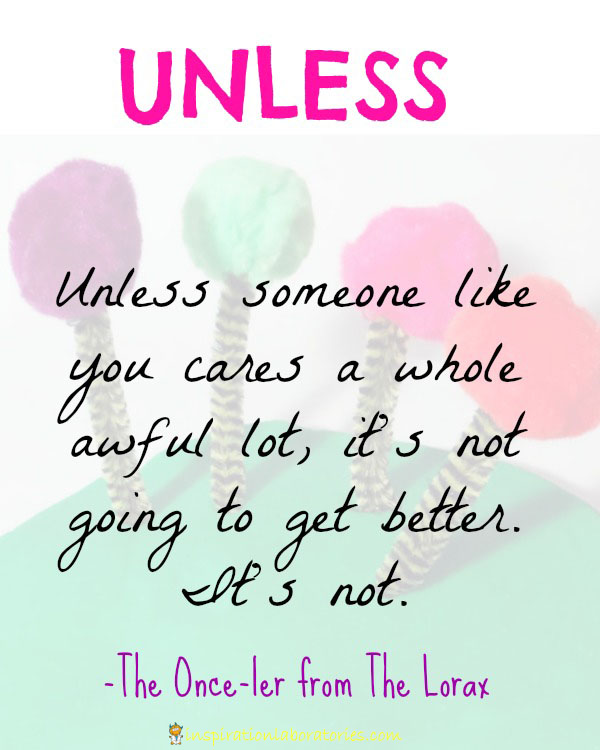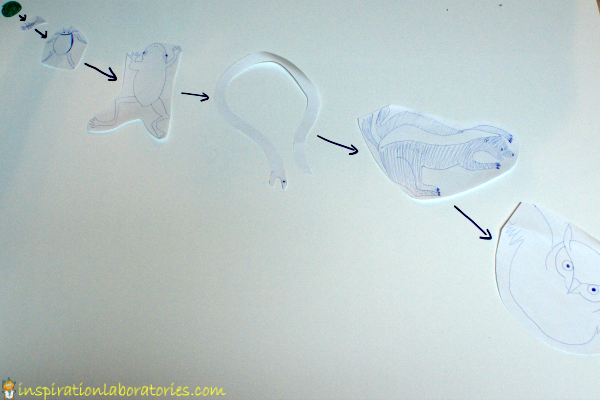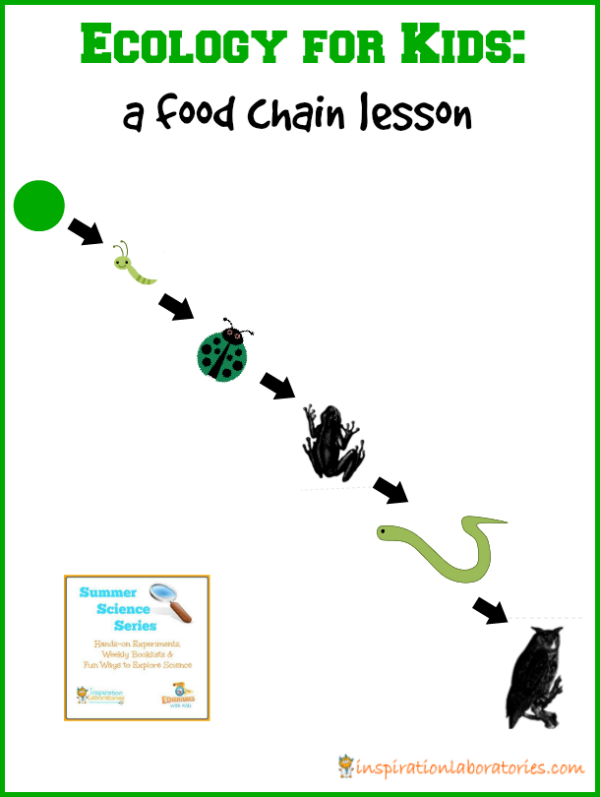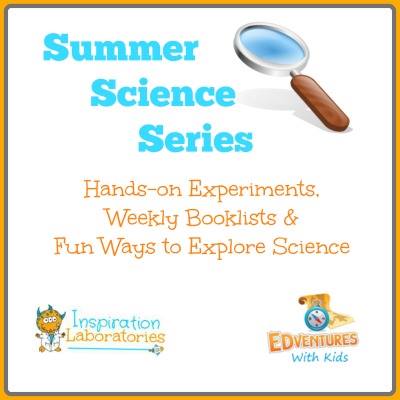Ecology for Kids: Food Chain Lesson {Summer Science Series}
The theme for the last week of our Summer Science Series with Edventures with Kids is ecology. Try this simple food chain lesson to introduce ecology to kids. Affiliate links are included in this post. Thanks for supporting Inspiration Laboratories!
Pond Circle
Pond Circle by Betsy Franco is a good book to use for introducing food chains to kids. I love what the jacket says about the book: “On a summer night by a small pond, all seems still. But a closer look reveals a world of activity—mayflies dart, beetles dive, frogs spring, skunks shuffle, and owls swoop. As a young girl watches, the circle of life unfolds. Betsy Franco’s rhythmic, cumulative text makes this a lively read-aloud, and rich, luminous paintings by Stefano Vitale capture the bold beauty of nature. Young readers will be inspired to journey into their own backyards and discover the wonder of the living, breathing world around them.”
What is Ecology?
Ecology is the study of the relationships between organisms and their environment. It’s how they interact with each other {predation/eating, competition, symbiosis, etc.} and how they interact with their non-living environment.
Ecology is my favorite science because I think it has the most bearing on our lives. We are a part of the ecosystem and we need to take care of it. {Earth Day should be every day.} As a former educator at an aquarium and Oceanography teacher, ocean education holds a special place in my heart. You can read more about how a trip to an aquarium can help with ocean education.
The Once-ler from The Lorax says it best: “UNLESS someone like you cares a whole awful lot, it’s not going to get better. It’s not.” Ecology shows us how things are connected and why we should care.

Food Chain Lesson
After reading Pond Circle, talk about the organisms in the book. The back of the books describes them each. Although for some reason, algae is called a plant. It is actually a plant-like protist. Create your own food chain using the organisms.
I drew each of the organisms copying the drawings in the book. You could trace them, let your kids draw them, or use clip art.
We placed each of the organisms on a large white board as we read the book a second time through.

Then, we drew arrows to represent the flow of energy. Arrows go from the prey {what gets eaten} to the predator {what does the eating}.
Expand on this lesson by making other food chains. I love how Science Sparks used toys to make food chains. {They also made a worksheet for you to use. Cut out the names of the organisms and make food chains.}
Summer Science Series Weekly Reading Themes
Week 1: Biology
- Backyard Earthworm Experiments
- Kids’ Books and Websites about Biology over at Edventures with Kids.
- Growing Vegetable Soup at Read Science
- Easy Earthworm Science Experiment
- How to Attract Fireflies
Week 2: Geology
- Rock Collecting
- Kids’ Books and Activities About Geology at Edventures with Kids
- R is for Rocks {part of our A to Z Science series for toddlers and preschoolers}
- Sediment Observations and Learning about Dirt at Read Science
Week 3: Astronomy
- Learn about the Sun, Moon, and Earth
- Astronomy Activities for Kids with a list of books about stars at Edventures with Kids
- Make a model of the solar system with this planet order activity.
- Play a Planet Board Game to learn about the planets.
Week 4: Physics
- Physics for Kids: Exploring Color and Temperature
- Exploring Physics with Kids with a cool sink and float activity at Edventures with Kids
- A collection of physics experiments and activities for preschoolers
Week 5: Chemistry
- Kitchen Chemistry Experiment: Make a Cup Cake
- Chemistry Experiments for Kids with CO2 from Edventures with Kids
- More Kitchen Chemistry ideas
- 20 Baking Soda Experiments
Week 6: Ecology
- Ecology for Kids: Food Chain Lesson
- Learn about Biomes plus Ecology Books and Resources at Edventures with Kids
Subscribe to our weekly newsletter and get exclusive science explorations for young scientists in each issue.
![]()




Leave a Reply